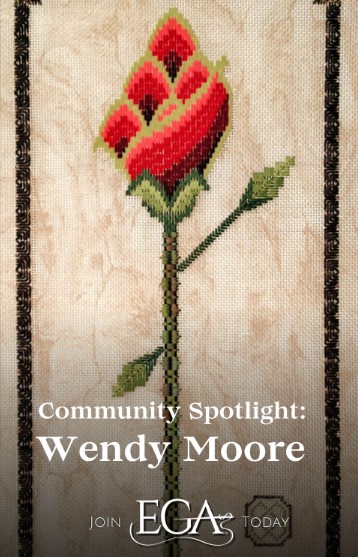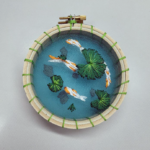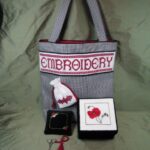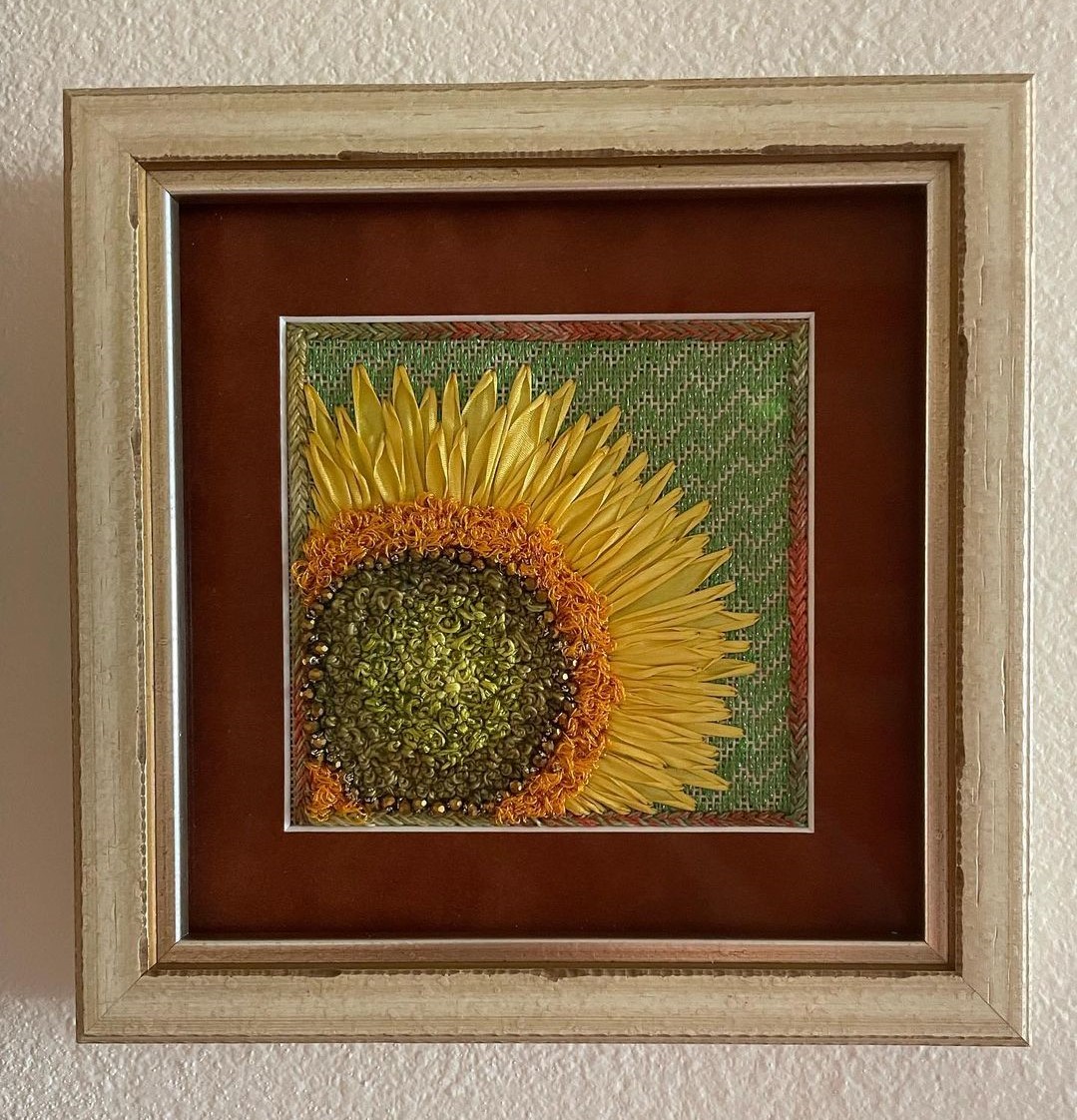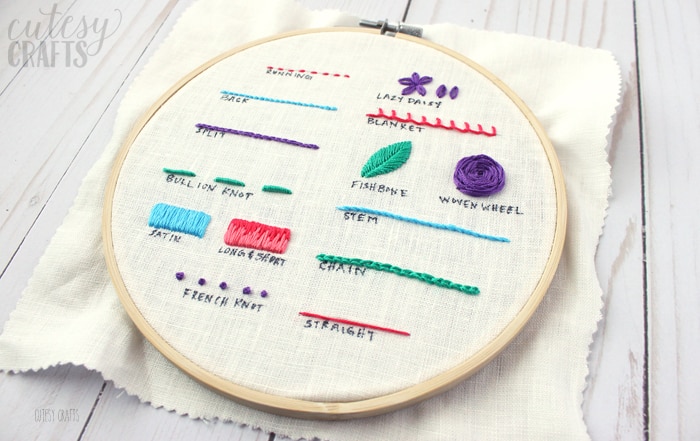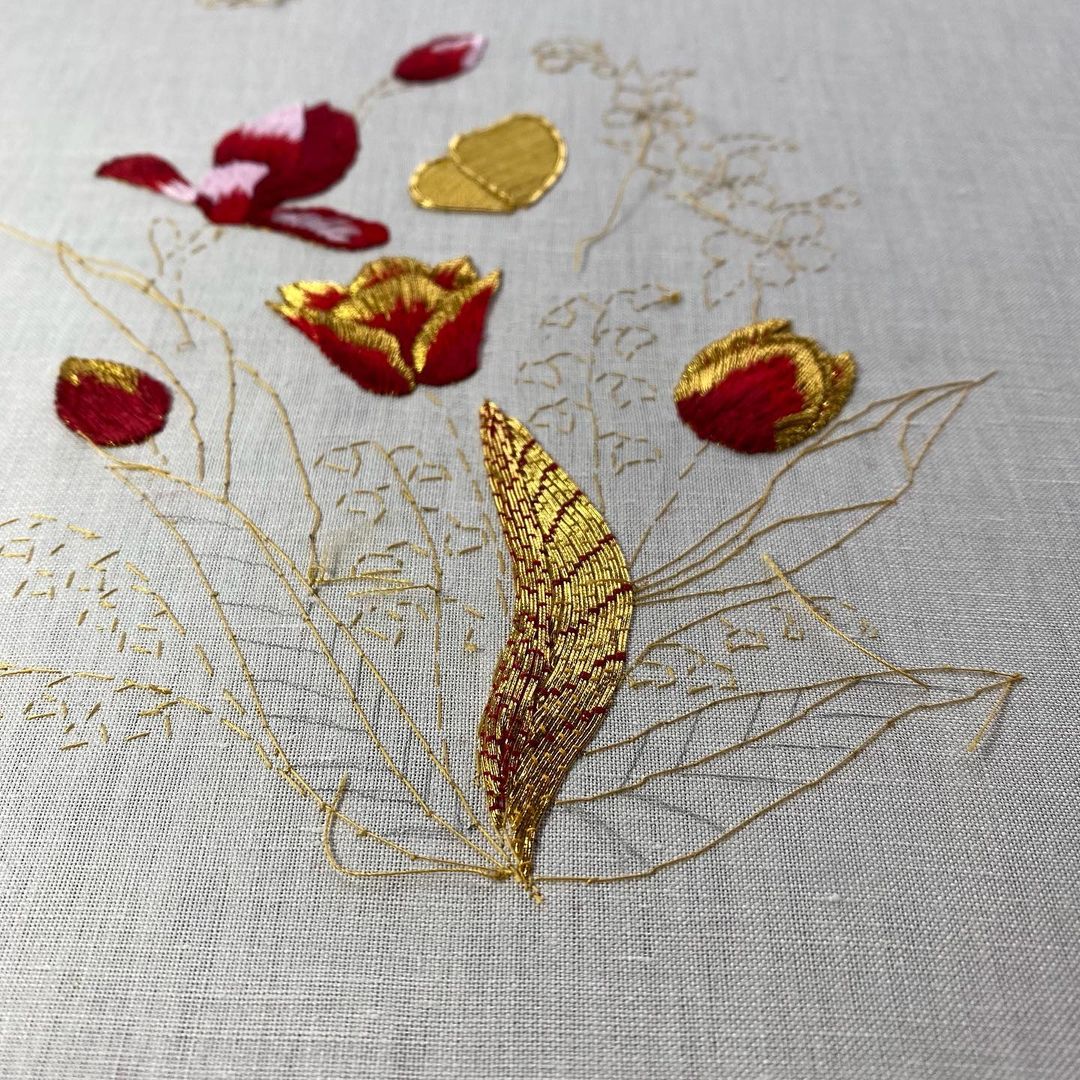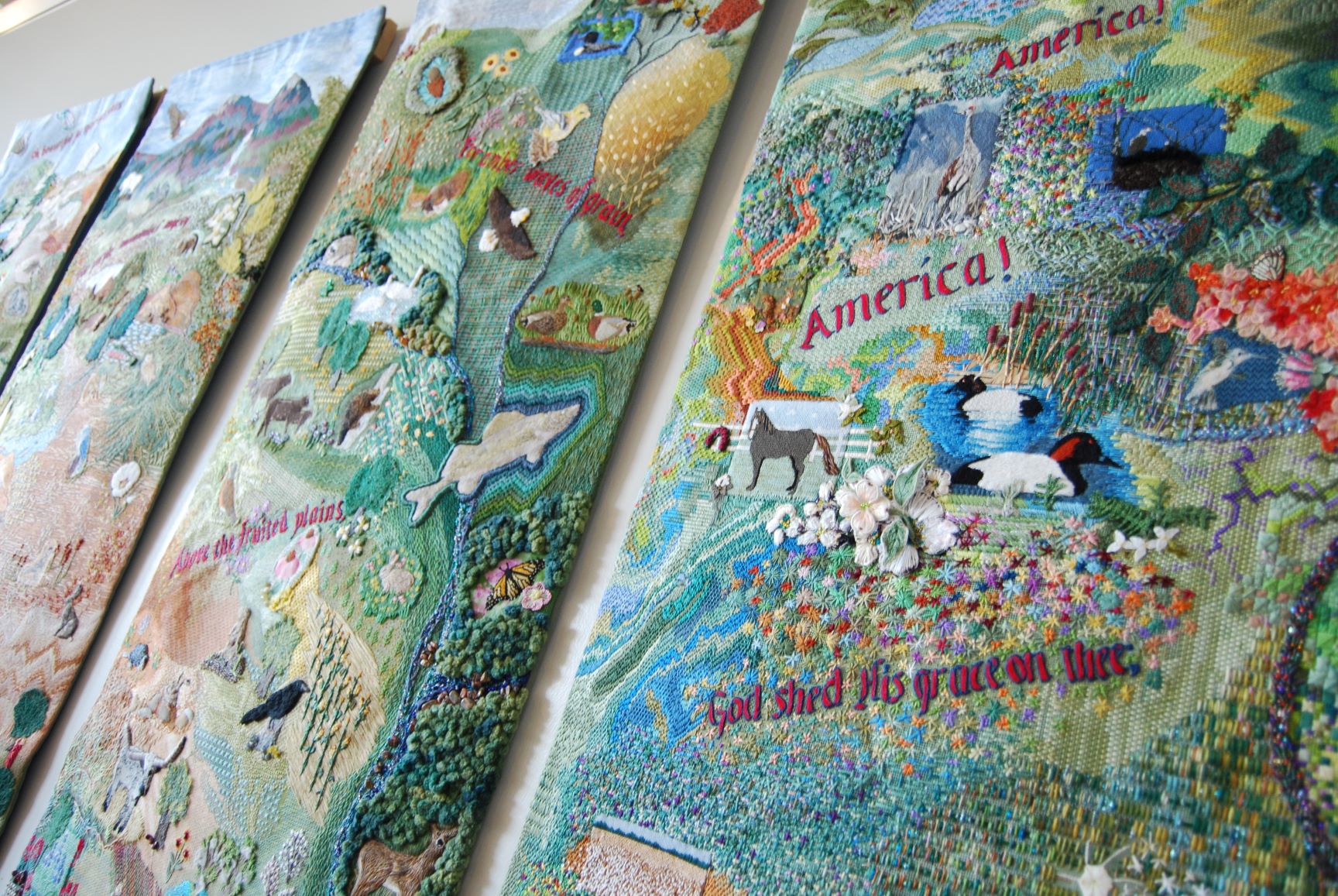Registration for EGA’s second Virtual Education Course, Rennie’s Rose Garden with Wendy Moore, closes on August 1, 2025. When the chance to present a class with Wendy Moore arose, the Embroiderers’ Guild of America leaped at the opportunity. Wendy’s distinctive history in fine arts, costume design, and as a needlework artist and teacher creates a unique opportunity for embroidery students to learn from a creative with a singular eye for color, texture, and composition. We talked with Wendy about her background, how it informs her design sensibilities, and what she hopes students take from the Rennie’s Rose Garden virtual education course.

How were you introduced to embroidery?
My Grandmother taught me the basic surface stitches; cross stitch, chain, lazy daisy, stem stitch, French Knots. I was probably 9 or 10. But it didn’t stick. I was not into hobbies as a kid, too much of a reader, piano lessons, band, etc. It wasn’t until my move to Detroit in the late 80s that I was introduced to counted cross-stitch by my new boss. I was a costume designer by then, and the handwork fit into my mindset like a glove. I was working on a medieval Christmas pageant when I was introduced to one of the local EGA chapters that happened to meet in the same building I made costumes out of. And the rest, as they say, is history. I took every class, tried every technique, eventually started going to regional seminars, became an officer (still am), then joined NAN and got certified as a teacher.
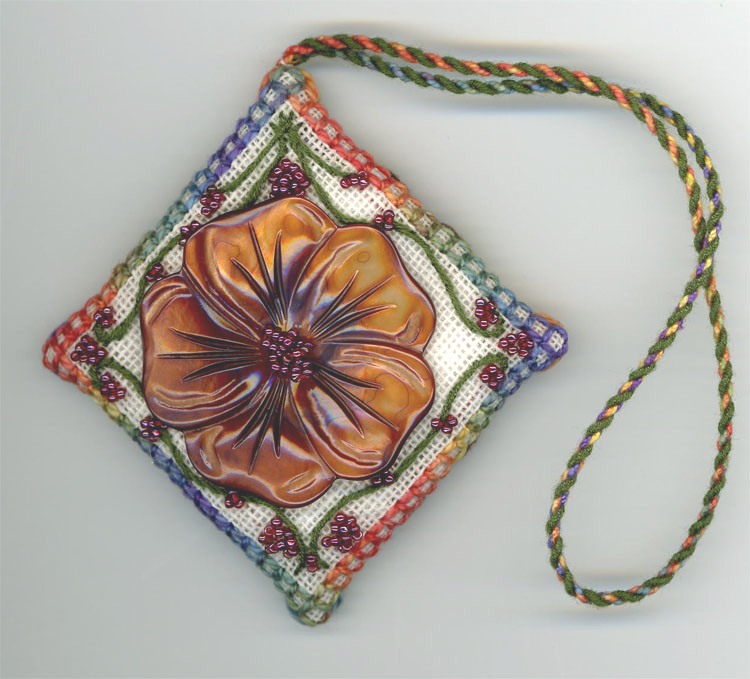
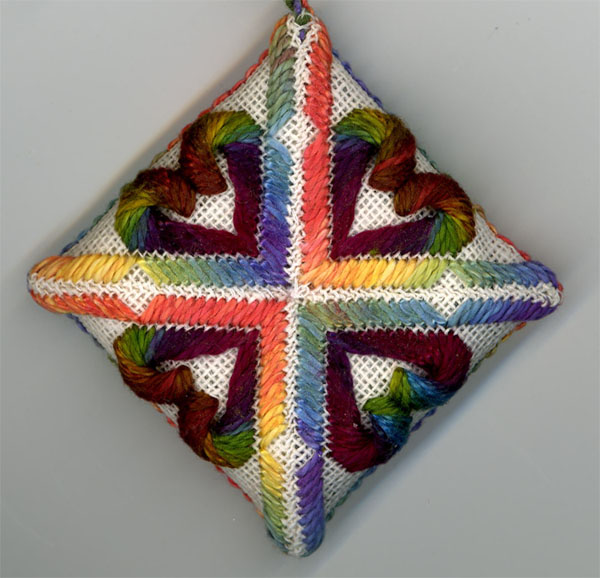
In the class description for Rennie’s Rose Garden, it says “Wendy Moore incorporates both her Master of Fine Arts degree in theatrical costume design and many years of classroom teaching to her needlework design and classes.” How do the principles you learned in theatrical costume design enter into your needlework design and classes?
I have to find the right vehicle for some theatrical content in my work. But as a costume designer, you spend countless hours studying color theory and the design elements, much like an art degree. Also, everything you put on an actor has a purpose—whether the character would wear it, whether the director wants the character to wear it, whether the playwright says he must wear it, or whether it fits into your design scheme. I do the same thing when I design.
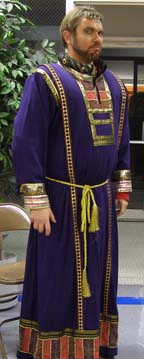
I usually have a direction or purpose for the design that is the inspiration point. Then, a general color palette. After that, I factor in what the design needs—color choice, texture, thread & canvas choice, the design elements, and under everything is the need to teach it to others, and in what time frame. I also do a lot of color theory teaching in nearly every piece. I find the processes to a final product to be similar in both art forms. I also usually dress to match my piece somehow. I call it dressing with a purpose!

What inspired you to transition from a career in theatrical costume design to needlework design and teaching?
I had already retired from the costume world years before getting too involved. That Christmas pageant (above) was 2 years after I had retired and was recovering from a badly broken leg that prevented me from going into fabric retail avenues. So embroidery kind of fit nicely into my more sedentary lifestyle. But once a designer, always a designer. I thank Debbie Stiehler for encouraging me (that is putting it mildly. She dragged me, almost by the ear, into the NAN certification program).
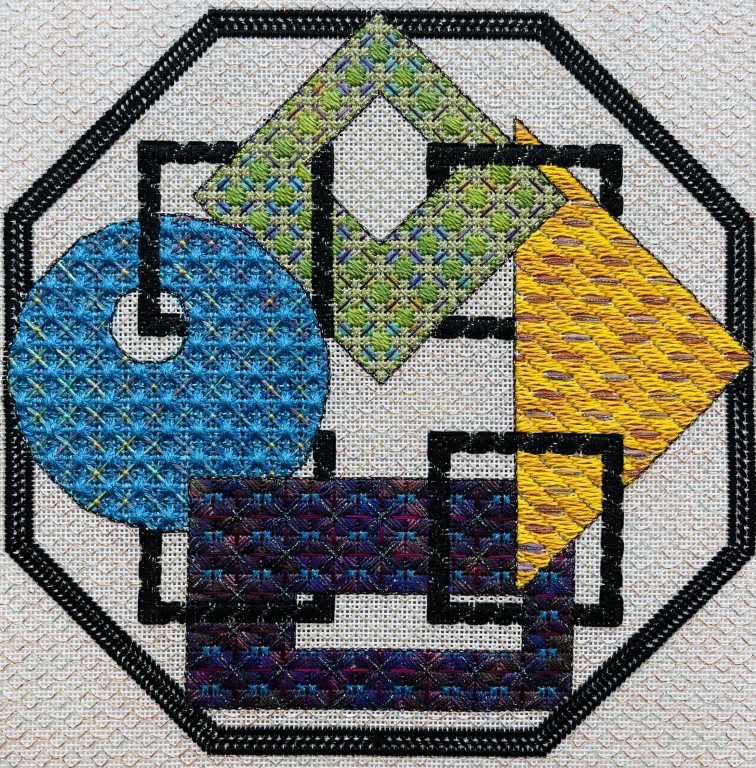
Your teacher bio also states that you want to “bring other forms of counted thread work to canvas designs.” What does that mean for you, and what does that process look like? What are the other forms of counted thread work you’d like to adapt to canvas?
Any time I can “come up in 1 and go down in 2,” I am a happy camper. My brain loves counting, patterns, the grid, the regularity, and, by definition, the predictability that comes with it. I was first drawn to Counted Cross Stitch, and when I joined EGA, Hardanger and Blackwork.

I have been developing my use of multi-layered, composite stitches. Many of them have layers based in Blackwork. I also love Bargello. But I am drawn by what the movement of the designs and patterns can look like, not just exist as patterns in a Bargello design. I manipulate Bargello to create somewhat real forms. I have a series of flowers where the blossoms and sometimes the leaves are patterned in Bargello. I am still looking for the design for Hardanger.
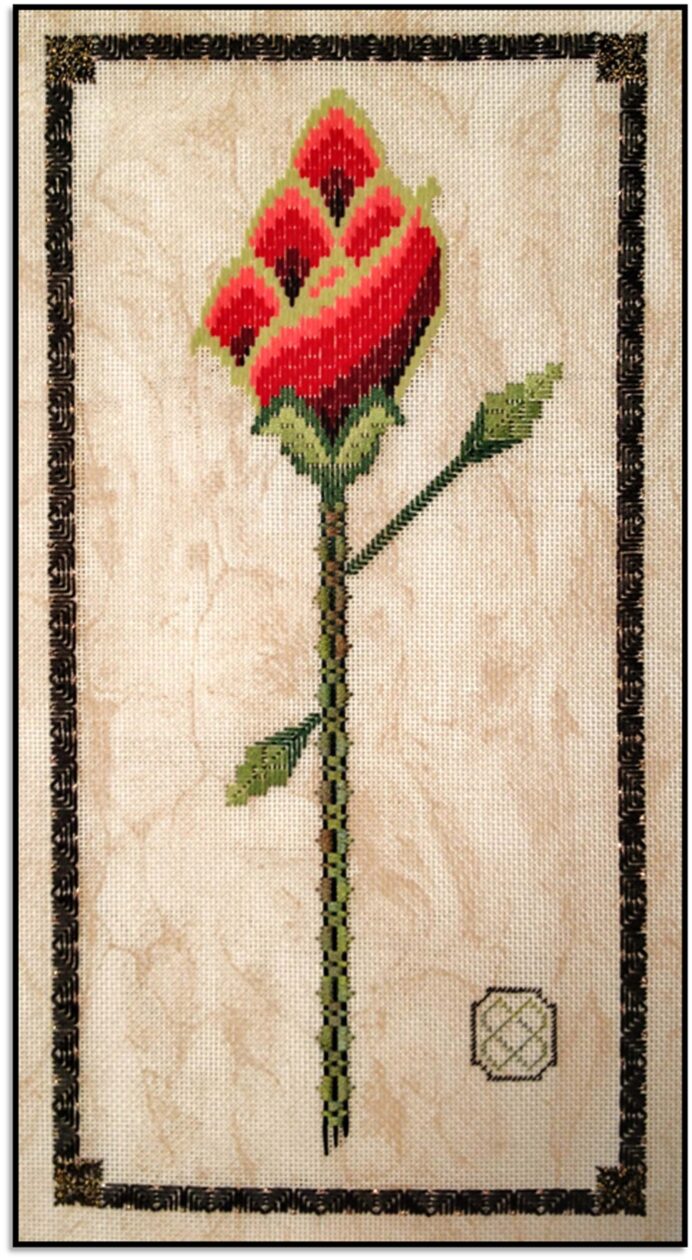
What inspired your love of the Art Nouveau and Arts & Crafts eras?
While researching a play at a Shakespeare festival, I came across Art Nouveau designs and literally fell in love with the flow, movement, and the usual content of the art. While looking further into Nouveau, I realized that I was particularly drawn to the illustrative and graphic art nature of it. I now find I am more drawn to graphic design than I am to fine art or the old masters.
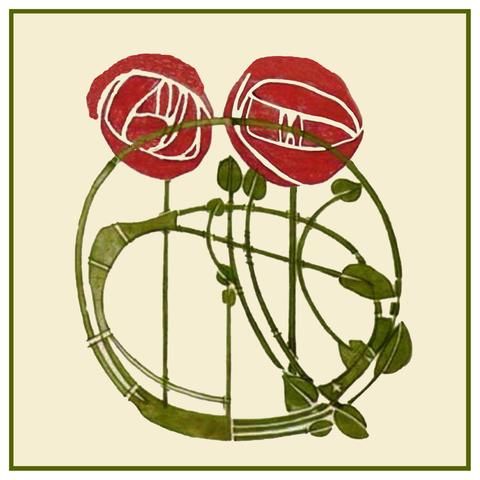
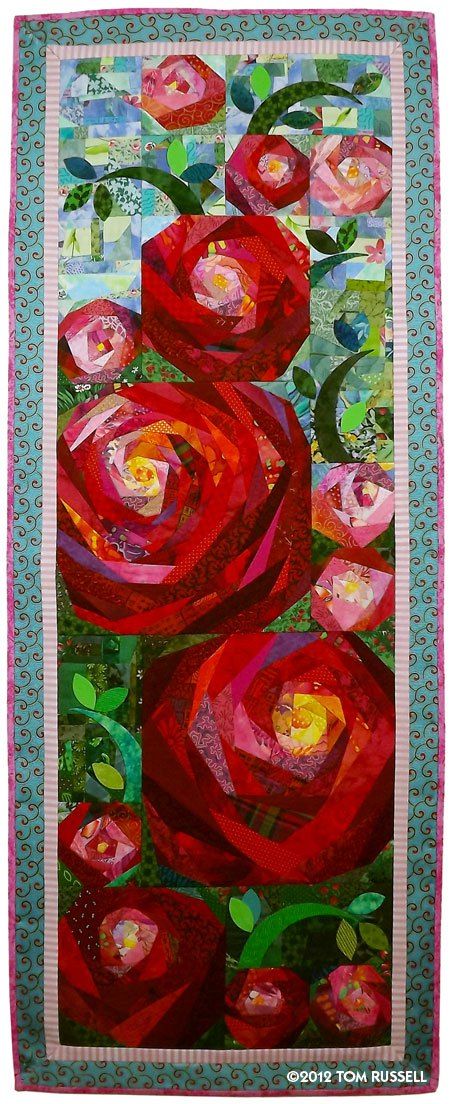
That led to my Art Deco phase and finally to the world that lived between the two movements, Arts and Crafts. I grew up near Frank Lloyd-Wright’s school in Spring Green, Wisconsin, and so was well aware of his motifs and designs. Then I saw an exhibit of Charles Rennie MackIntosh’s work in Chicago and just fell in love with his rounded roses along with the straight, regular, repeated lines in his graphic art.
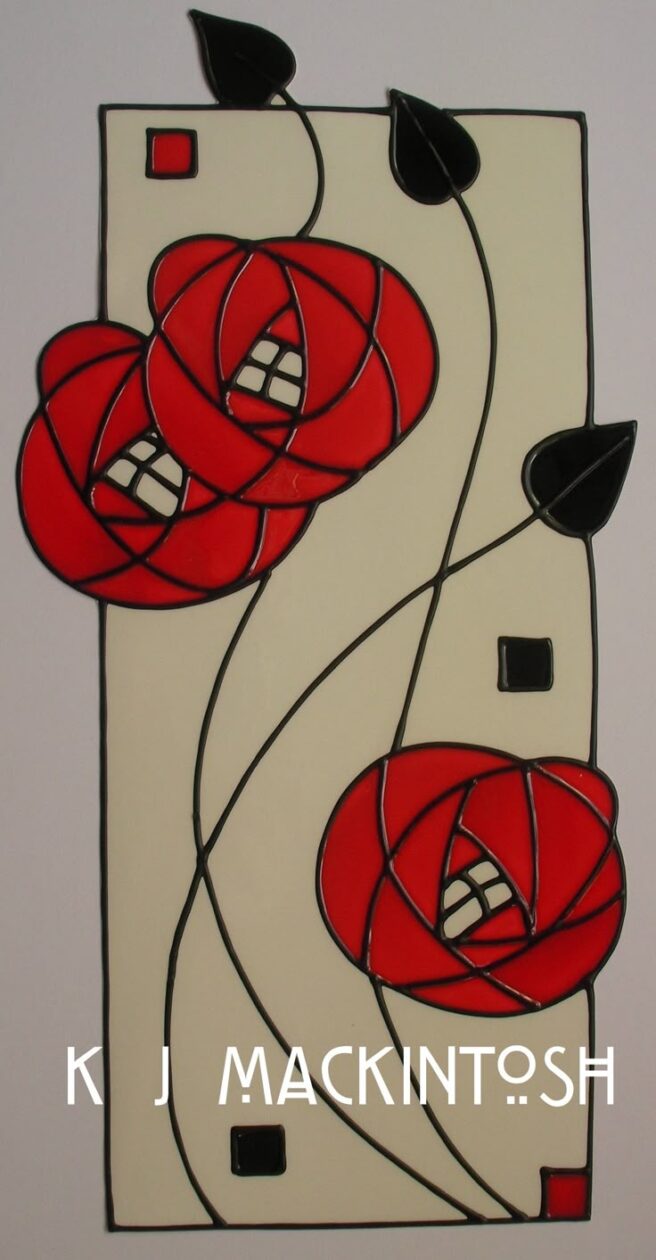
Do you have a daily/weekly practice that you’d recommend to other embroiderers interested in honing their craft?
I regularly search online and in books for ideas, color palettes, inspirations, and interesting composition. I have saved countless photos both online and on my computer. Those that I think have great potential, I will print off and display in my workspace as a source of encouragement.
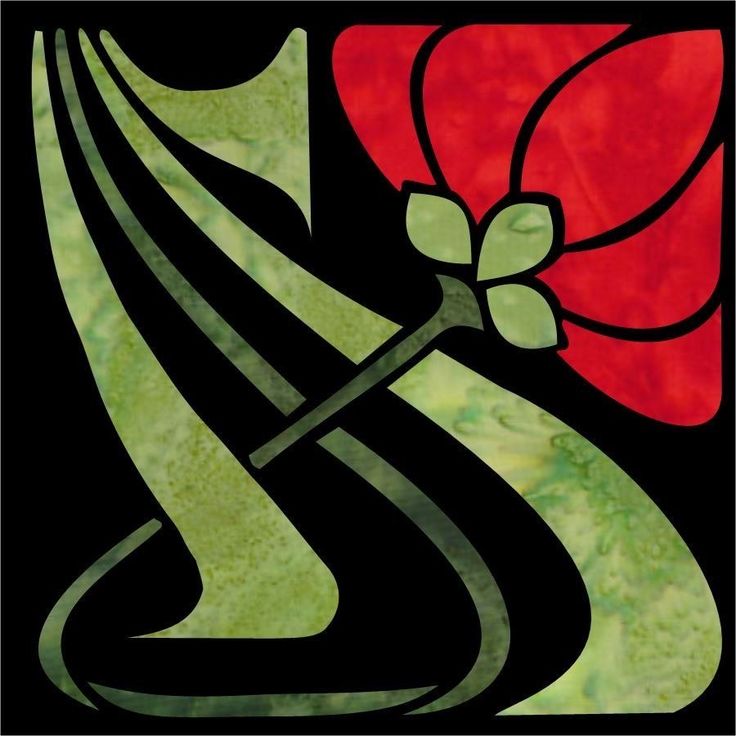
Don’t be afraid to stitch techniques that are either unfamiliar to you or are different from your normal endeavors. You never know what will inspire you or what you find you actually really like doing. Experiment, combine stitches differently than in the books. There really aren’t any rules, you know. Work a stitch in different parts, different colors, don’t be afraid of changing something in a design.
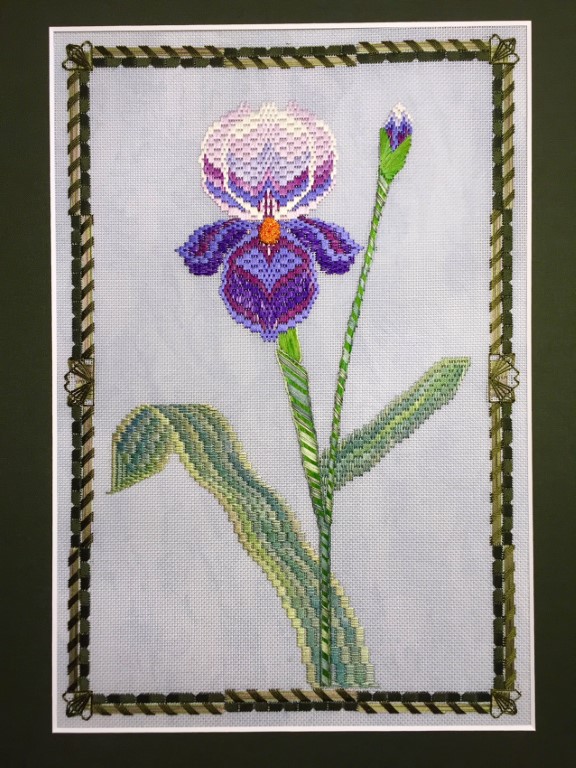
As a designer, I teach in my classes that I would appreciate your learning my technique for the reasons I have given, but once you are no longer paying me to teach, it’s your piece. If you want to change something, or some color, or even a stitch, by all means, go for it.
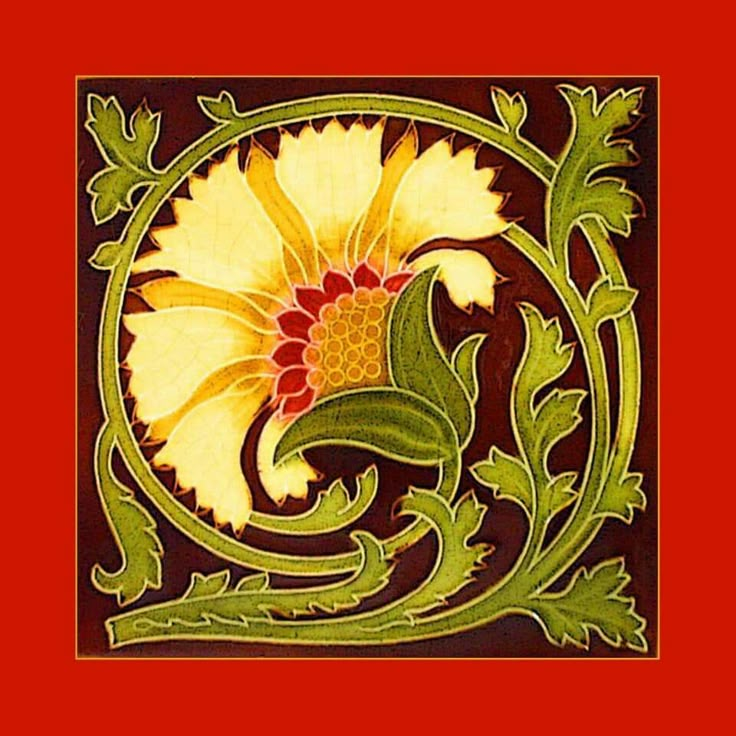
What do you hope stitchers take from the Rennie’s Rose Garden Virtual Course?
A new appreciation of the color pink! And a little about overlapping segments of design and using graphic techniques to render the roses.
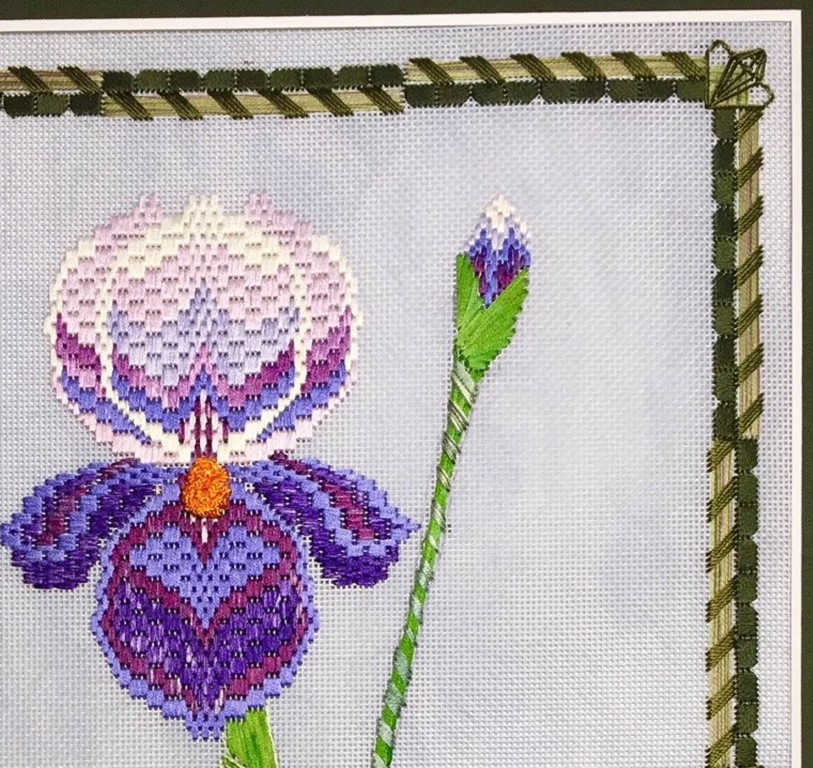
Do you have a favorite embroidery design from your portfolio? Why is it your favorite?
Besides these Mackintosh roses, my favorite piece is my Pyramids at the Oasis. This piece really honed in on my working techniques and how I set up a problem for me to solve with a design. Then this piece literally fell out of my head. I really love perceptual puzzles and how to make a 2-dimensional art form like embroidery create the 3D effect of pyramid shapes. Where’s the light source, what’s light, and what’s shadows? How do I make this an interesting stitching piece? What about color and ground?
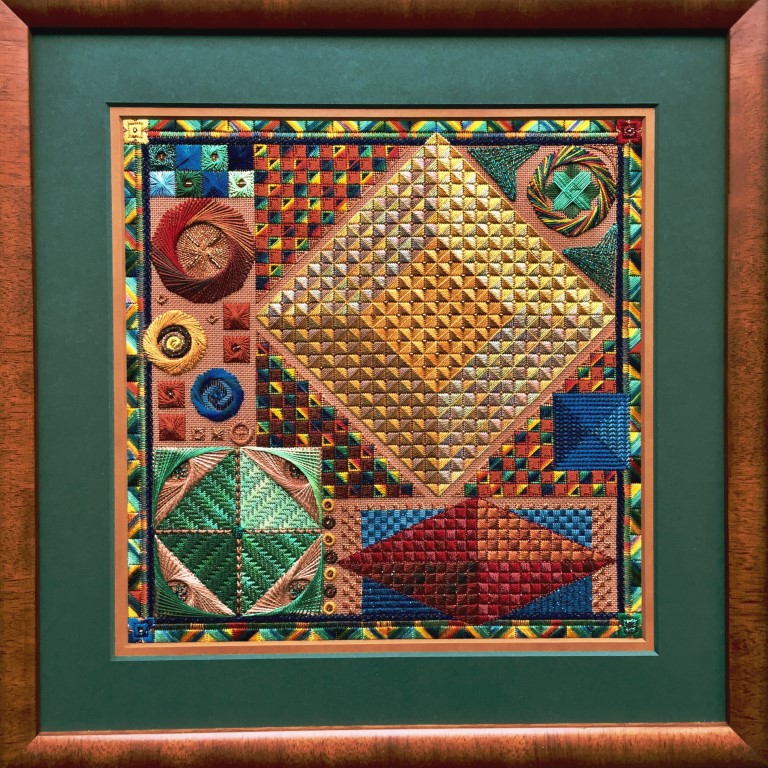
Do you have a favorite piece of embroidery advice?
Learn to use “L” and pin head stitches for anchoring your threads, and don’t be afraid of using shared holes when deciding what the path of your stitching is going to take. You need your path to get you the best “wrap” on the stitches for even tension and consistency.
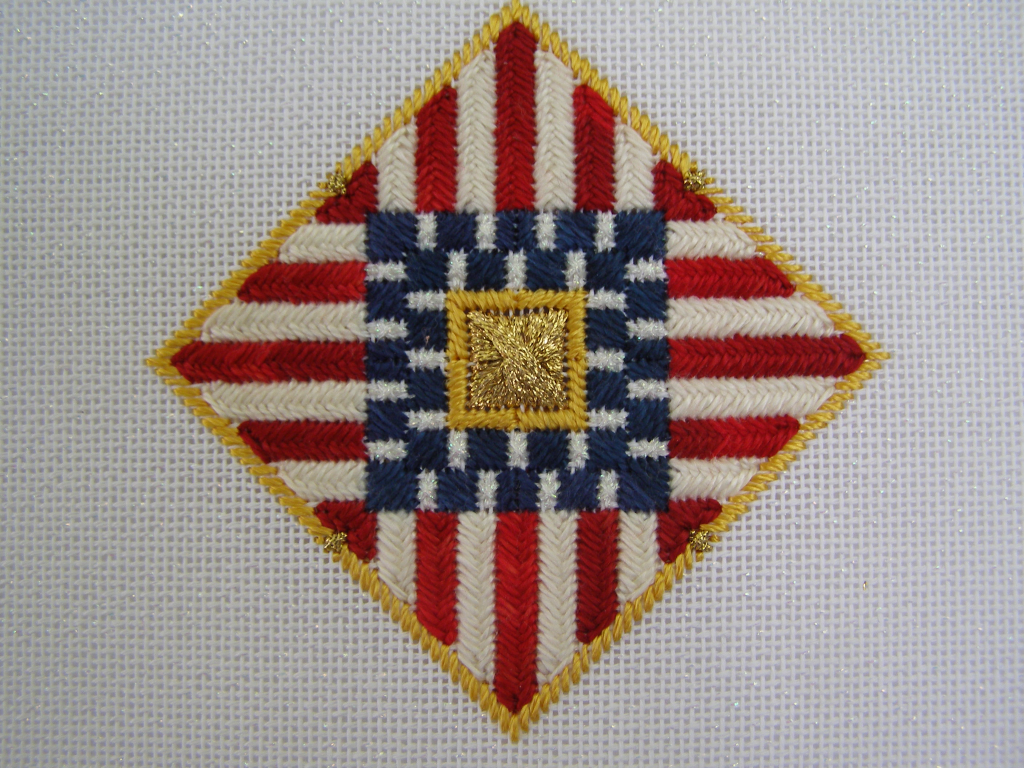
Do you have any projects or events coming up that we should keep an eye out for?
I think I have a multi-part geometric piece brewing that represents my Shakespeare addiction, hopefully in parts of 1 day each. I’m looking to create a book design for finishing them. Also, I will continue my atmospheric reflection series. Think Aurora Borealis.
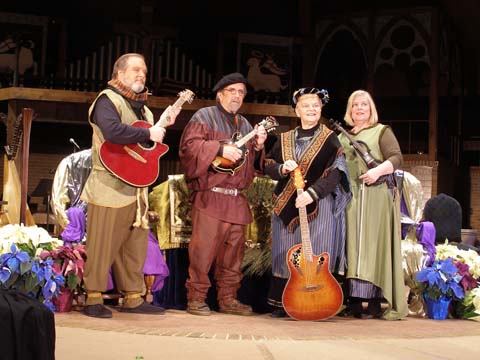
Where can interested needleworkers discover more of your work and upcoming projects and events? (website link, social media link, etc)
At the moment, my website is still under construction, and I don’t really use Instagram for promotion yet. If someone knows of a good web designer for a simple, resume-style website, I would really love to find one. Otherwise, I usually attend the Teacher showcase events at the national seminars. I do have a virtual brochure that I can send out upon request.
